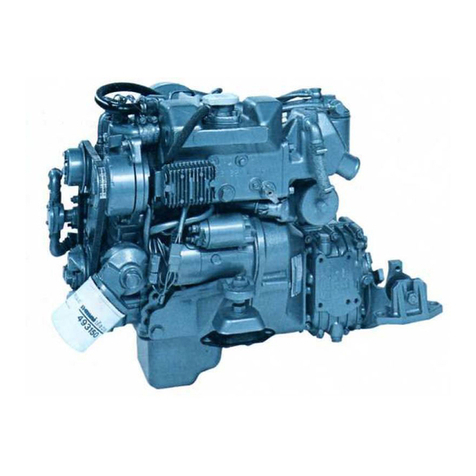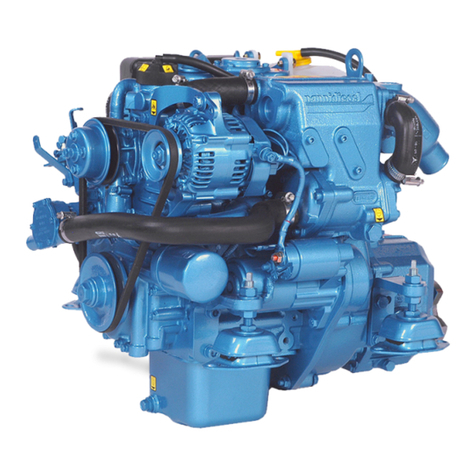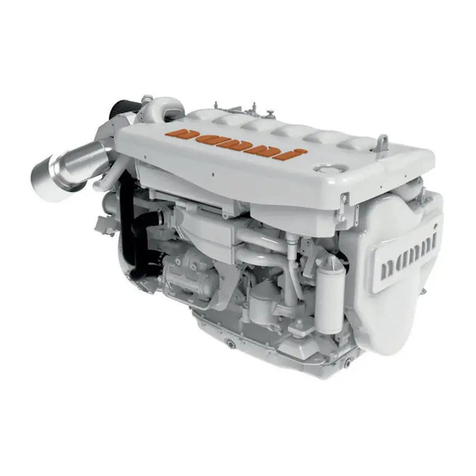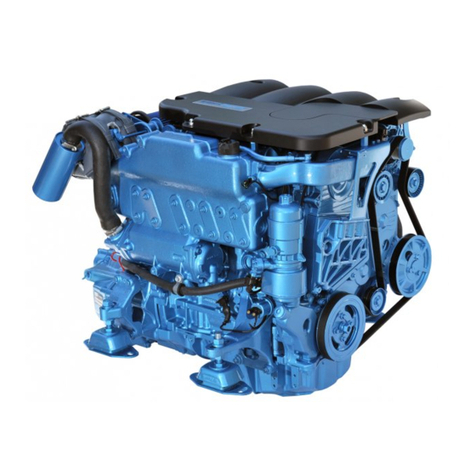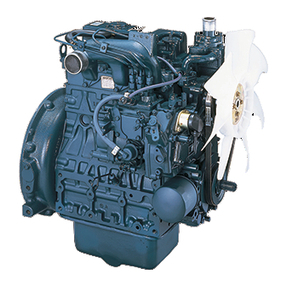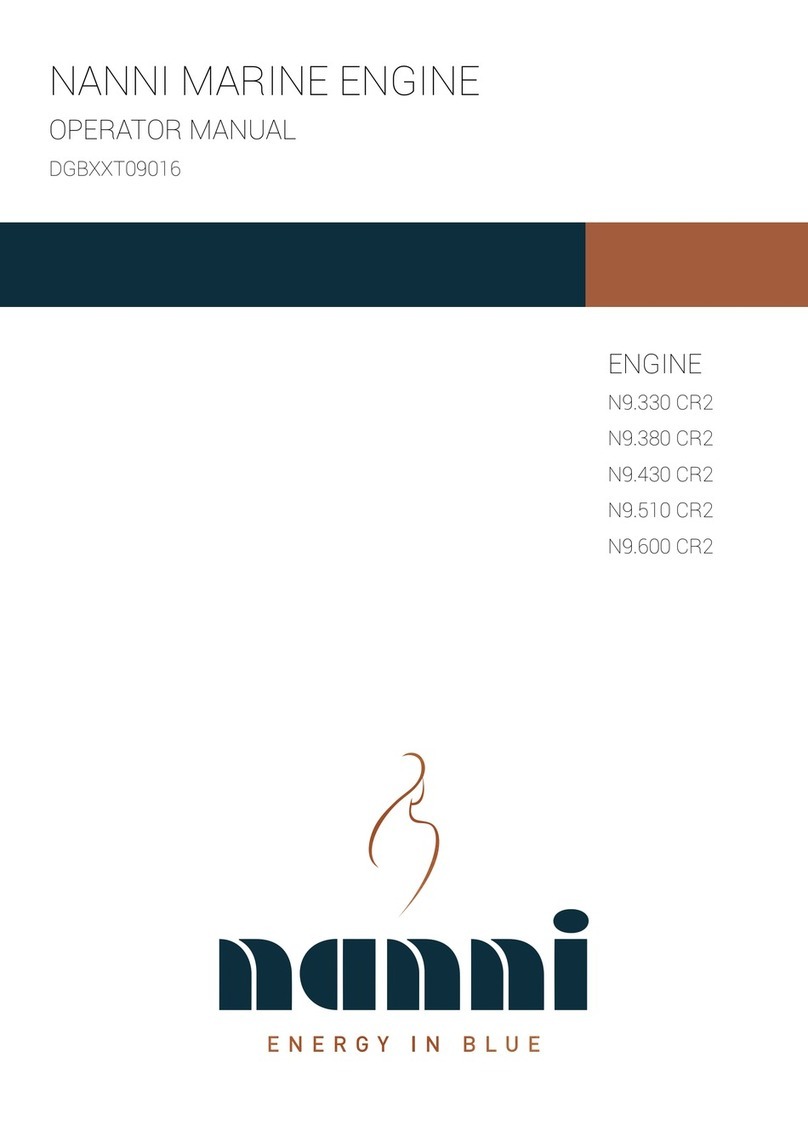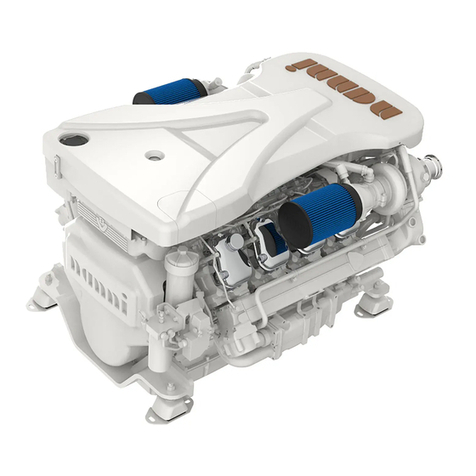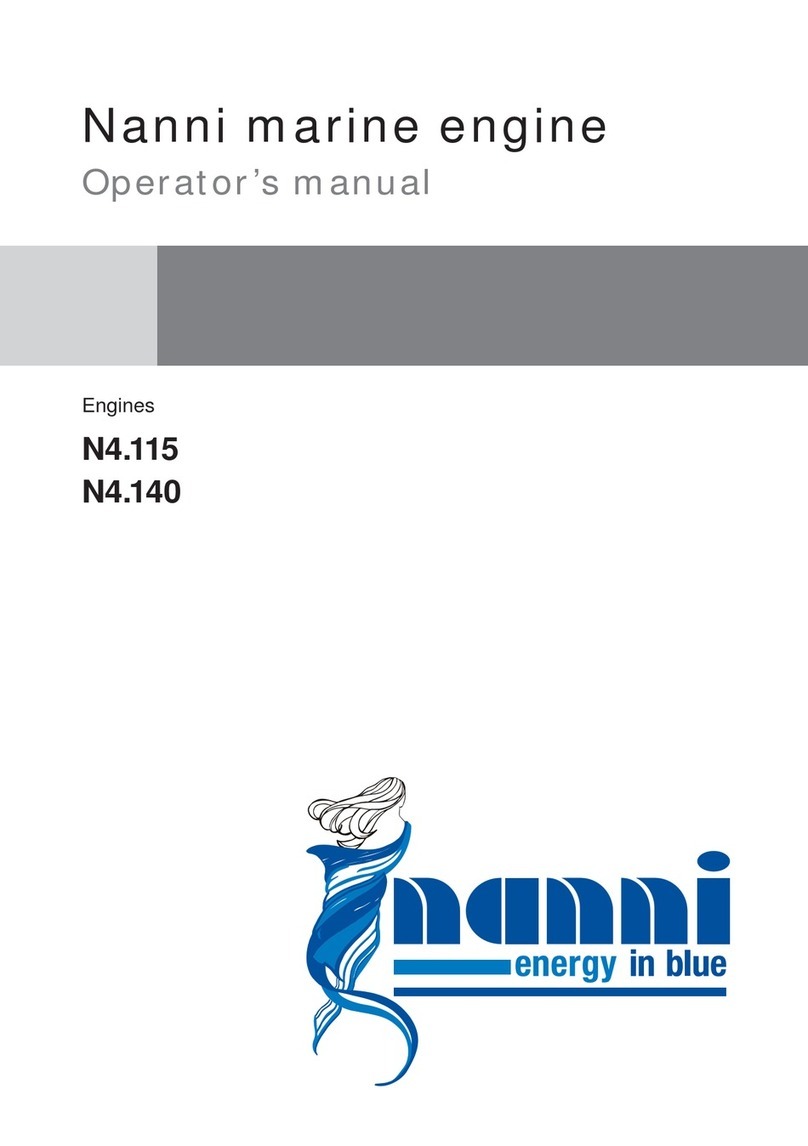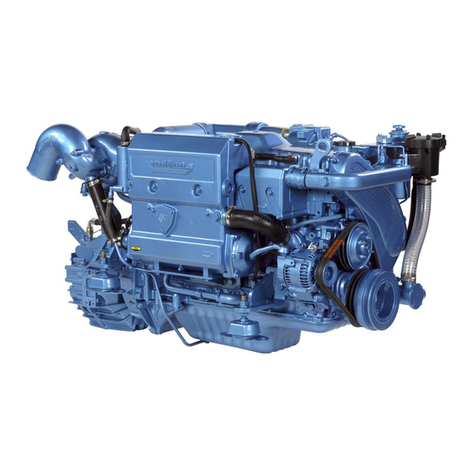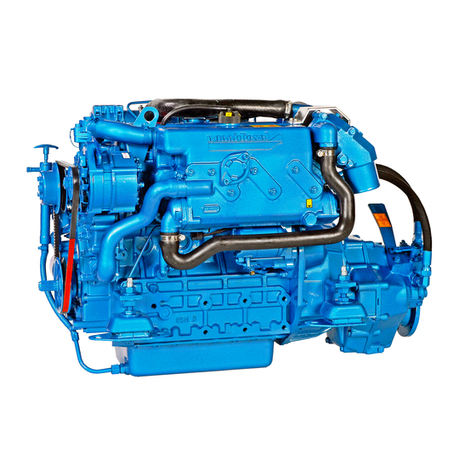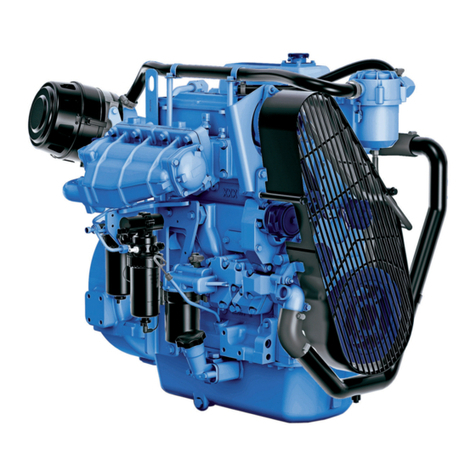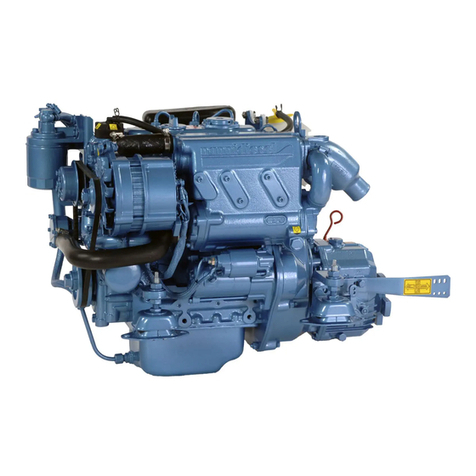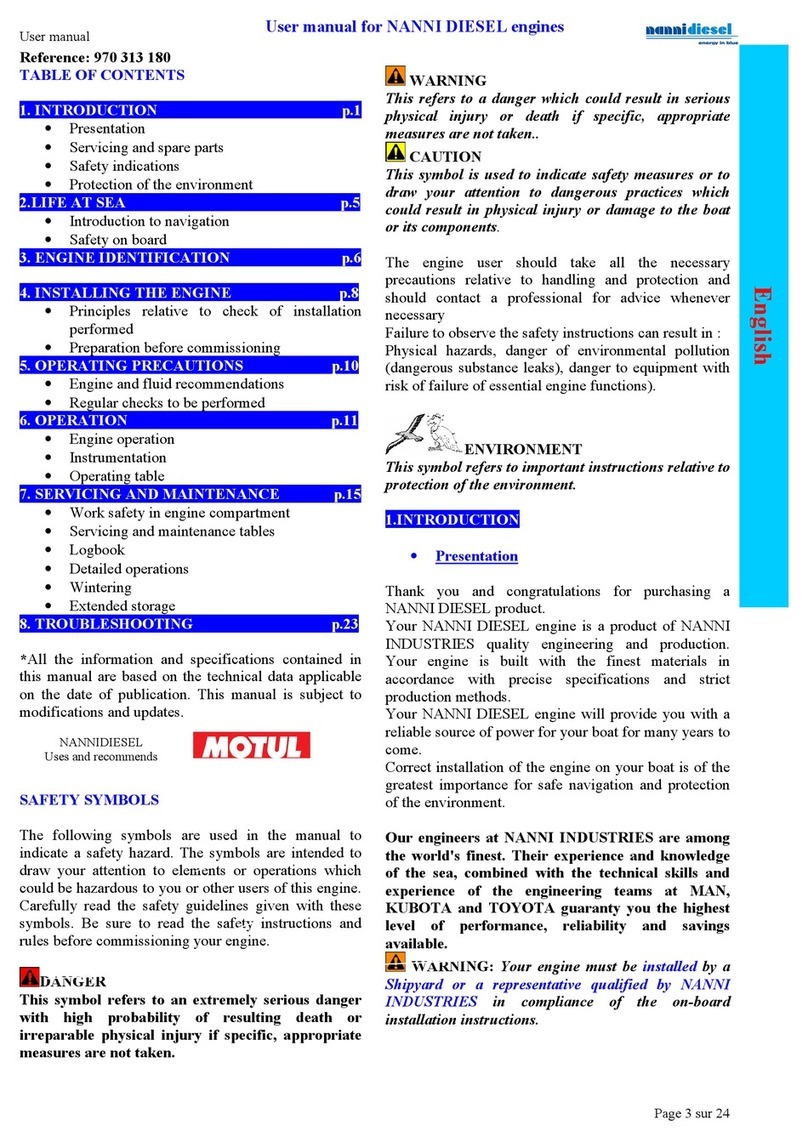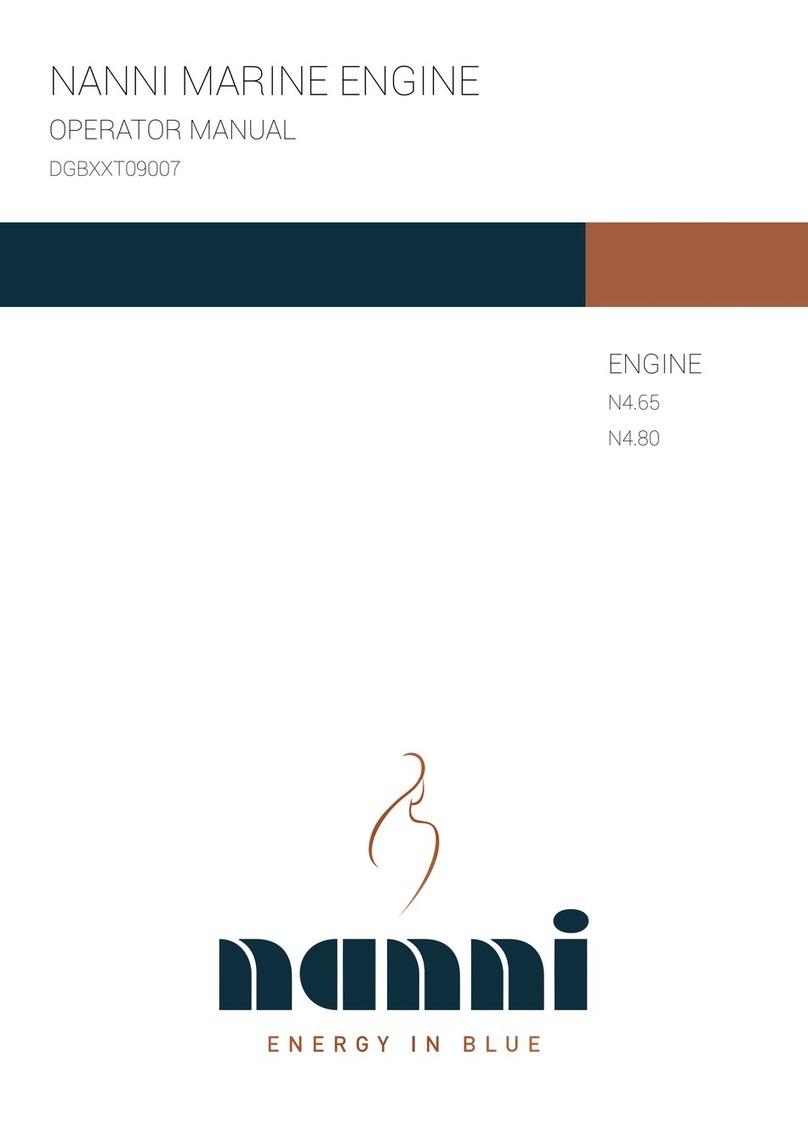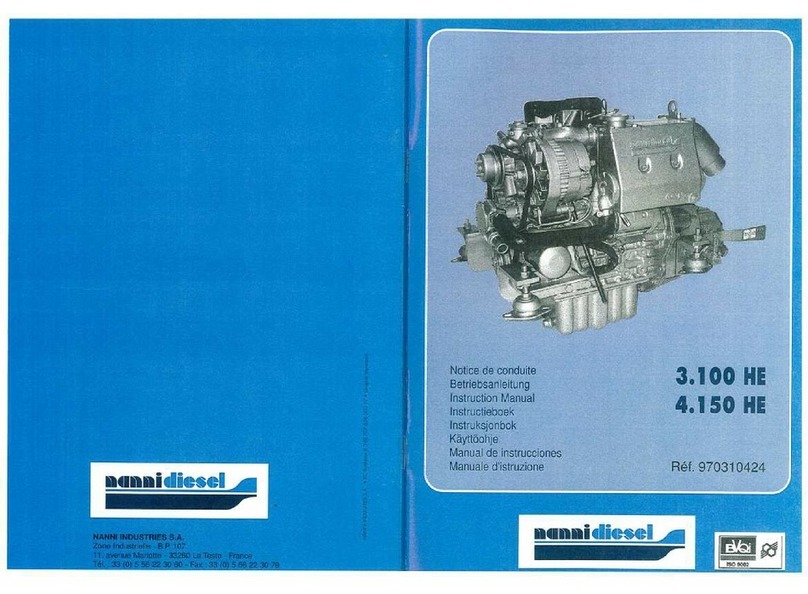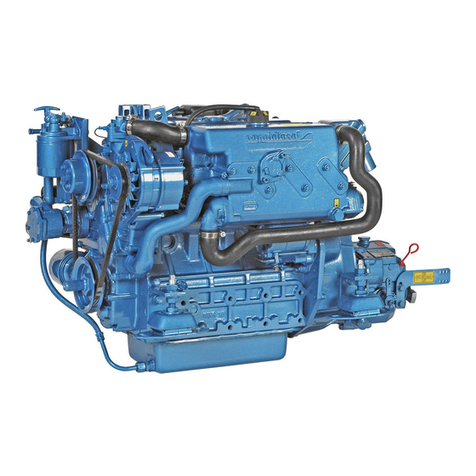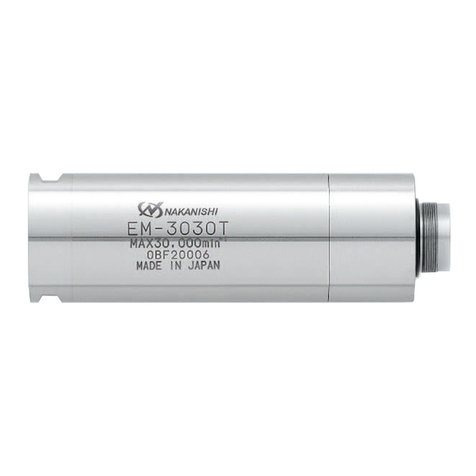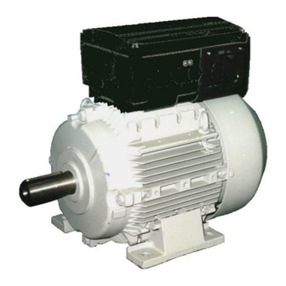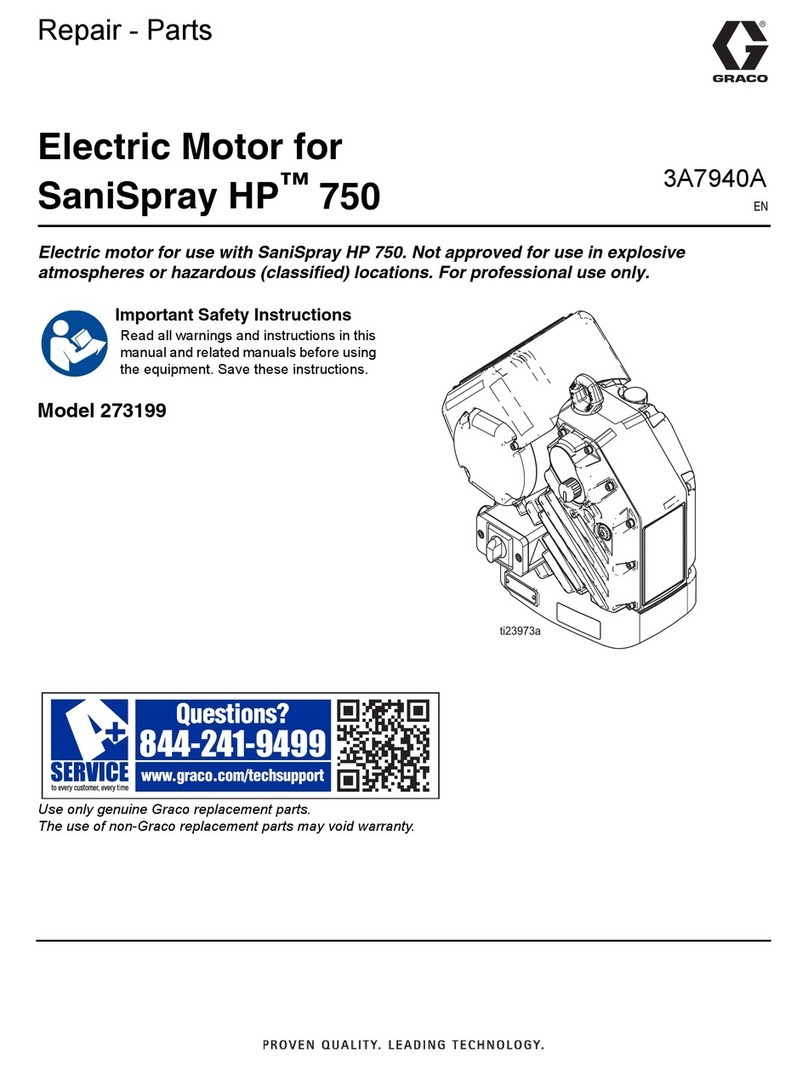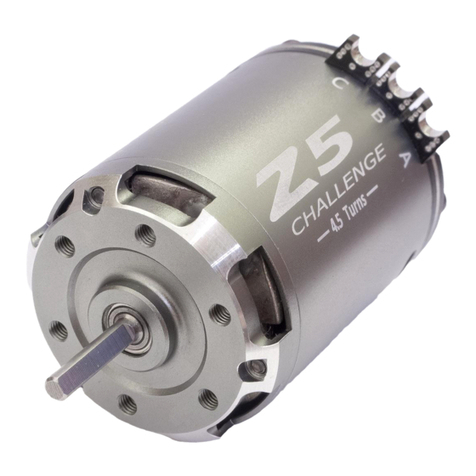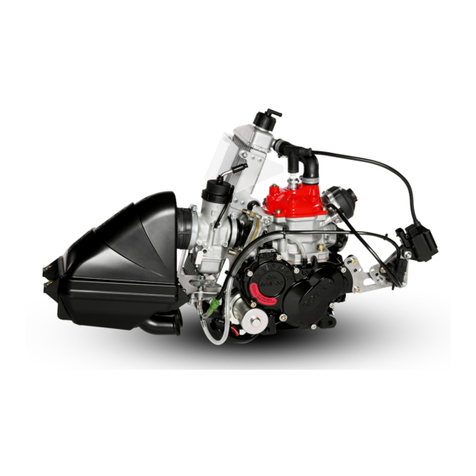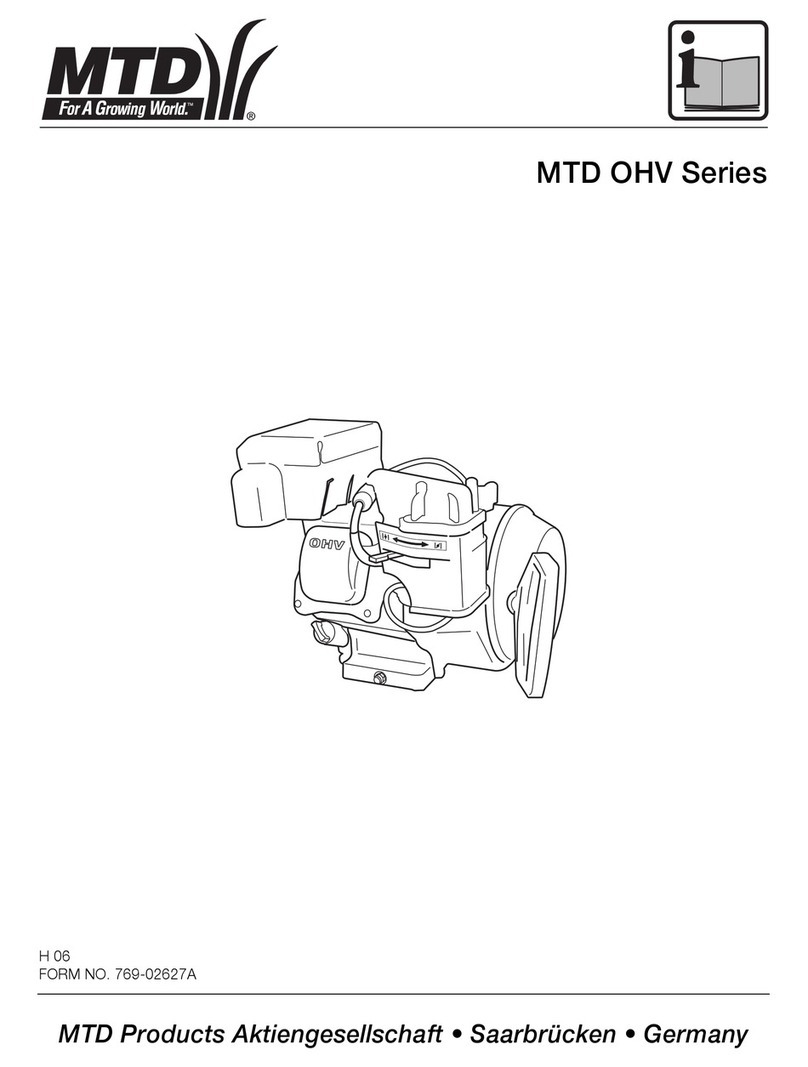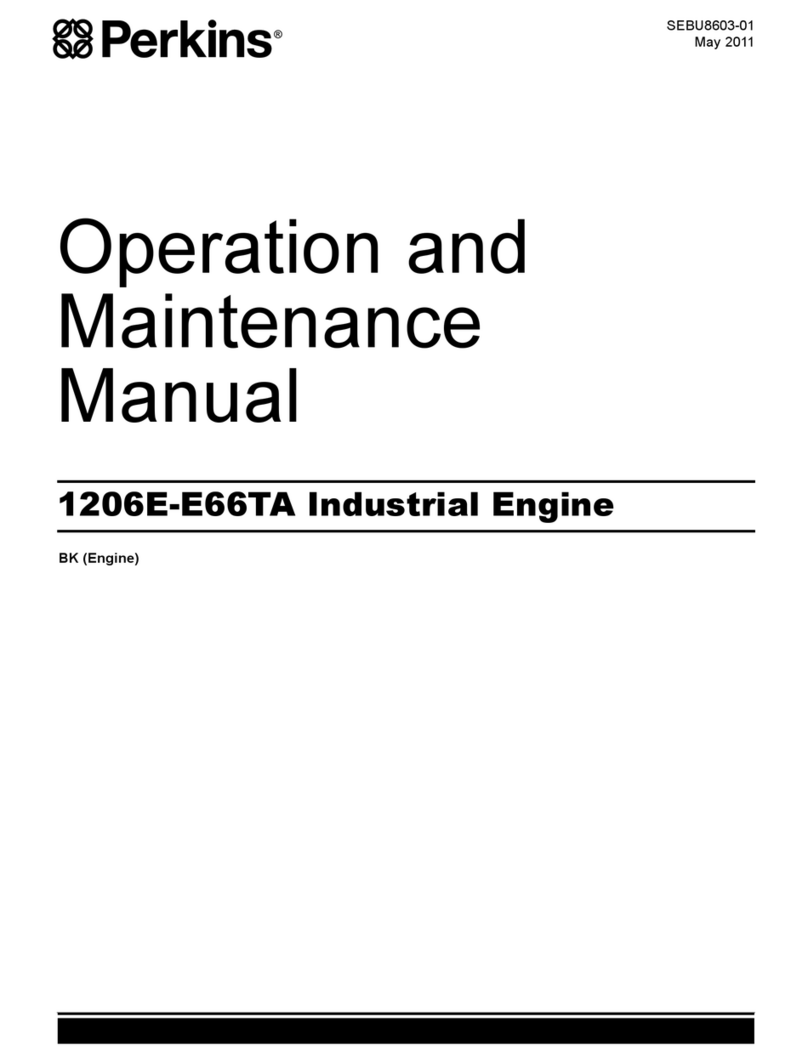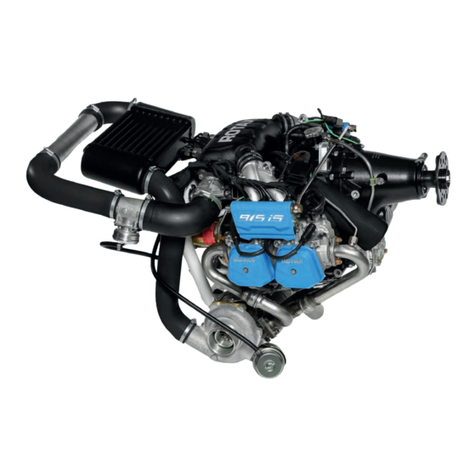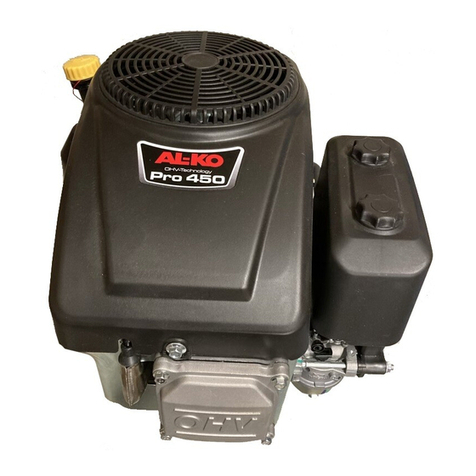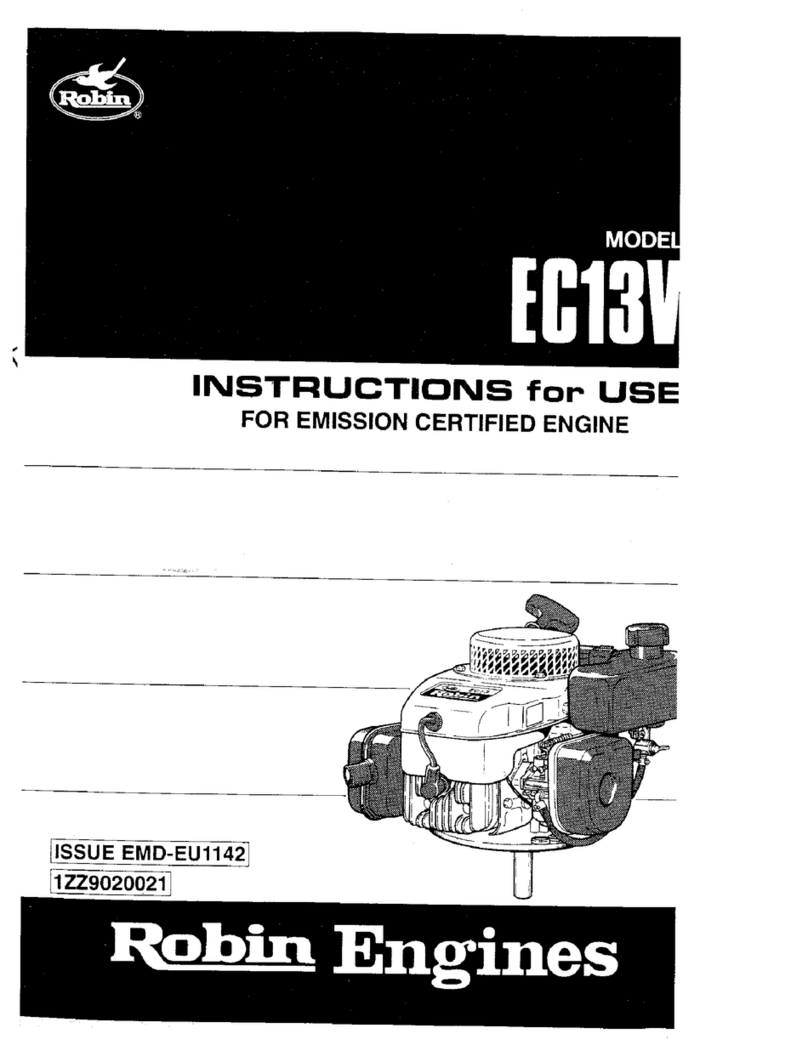Periodicity: following maintenance table.
(See values on board of technical characteristics)
Replacement of the seawater pump impeller
- Close the seacock valve.
- Take out the water pump cover.
- Extract the worn impeller with the help of a
crocodile clips.
- Clean the kept parts.
- Place the new impeller
- Refit the water pump cover using a new gasket.
- Open the seacock valve.
- Start the engine and check the circuit water-
proof ness
Electrical equipment
Regularly check the tension of the alternator belt.
Tighten the belt between the pulleys. (190 Nm
using a Denso SST).
I DANGER: - Stop the engine and switch off the
main battery switch, before making any repairs to
the electrical system.
Battery `
- Check the battery elements condition once per
season.
- The density of the electrolyte should be be-
tween 1.270 and 1.285
- The electrolyte should be check periodically.
The level should be maintained at 1 cm above
the accumulator plates. Add distilled water, it
necessary.
I DANGER: Never approach with a flame, and
never check the battery with “a spark", because
the gases, which may be released, are inflamma-
ble and explosive - The battery electrolyte is
highly corrosive. If battery acid comes in contact
with your skin, immediately wash with soapy wa-
ter:
Rinse eyes abundantly with water and consult a
physician immediately.
Do not short circuit.
RECOMMENDATIONS: In order to ensure proper
operation of the alternator and integrated regulator:
Never:
- Turn off the battery main switch whilst the en-
gine is running (risk of damage to the regulator)
- Reverse the battery terminals. The terminals
are respectively marked + (positive) and -
(negative); the negative is the ground terminal;
( the cable terminations and the cables must be
correctly attached).
- Change the circuit charger while the engine is
running.
For the use of several batteries, install a battery
isolator (consult our network). '
In case of starting the engine with a spare battery
and jumper cables, proceed in the following man-
ner:
- Disengage the main battery circuit, connect the
spare battery to the main battery by connecting
the + to the + and the –to the -. Once the engine
starts, disconnect the jumper cables and never
cut the main battery circuit.
You must disconnect the 2 battery cables
when:
- You use a battery charger
- Before any repair to the electrical system.
- Before doing any soldering work on a metal hull.
Rinsing the cooling system
Fresh water system
- Remove the Heat Exchanger pressure cap.
- Open the drain valve under the turbo volute
- Release the bolt banjo located under the ex-
haust manifold.
- Remove the block drain plug situated on the
thermostat cover
- Drain the water from the heat exchanger and
from the engine block
- Refill the system with fresh water and let the
engine run for several minutes at low rpm..
- Apply the procedure of filling/priming described
on the paragraph: Closed cooling circuit
- Drain the water and again replace it with a mix-
ture of antifreeze/fresh water.
- Fill the cooling system according to instructions.
NOTE: In the case where a boiler system is con-
nected to the engine, also completely drain this
one, and to refill it, note the quantity of the cool-
ant mixture being added. Check to see that all air
is purged from the system during the refilling.
IWARNING: Liquid under pressure. Do not
open the pressure cap when the engine is warm.
Allow the engine to coo/ and open the cap with
caution (two steps turning).
Draining the Sea water system.
- Close the seacock
- Drain all of the seawater intake pipes, the filter,
the seawater pump, the heat exchanger pipe, by
unscrewing the assembly collars.
- Drain the exhaust system, since a certain quan-
tity of water remains at the bottom of the water
lock.
Cleaning the heat exchanger; air cooler, fuel
oil cooler (if fitted), and gearbox oil cooler.
ENGLISH

